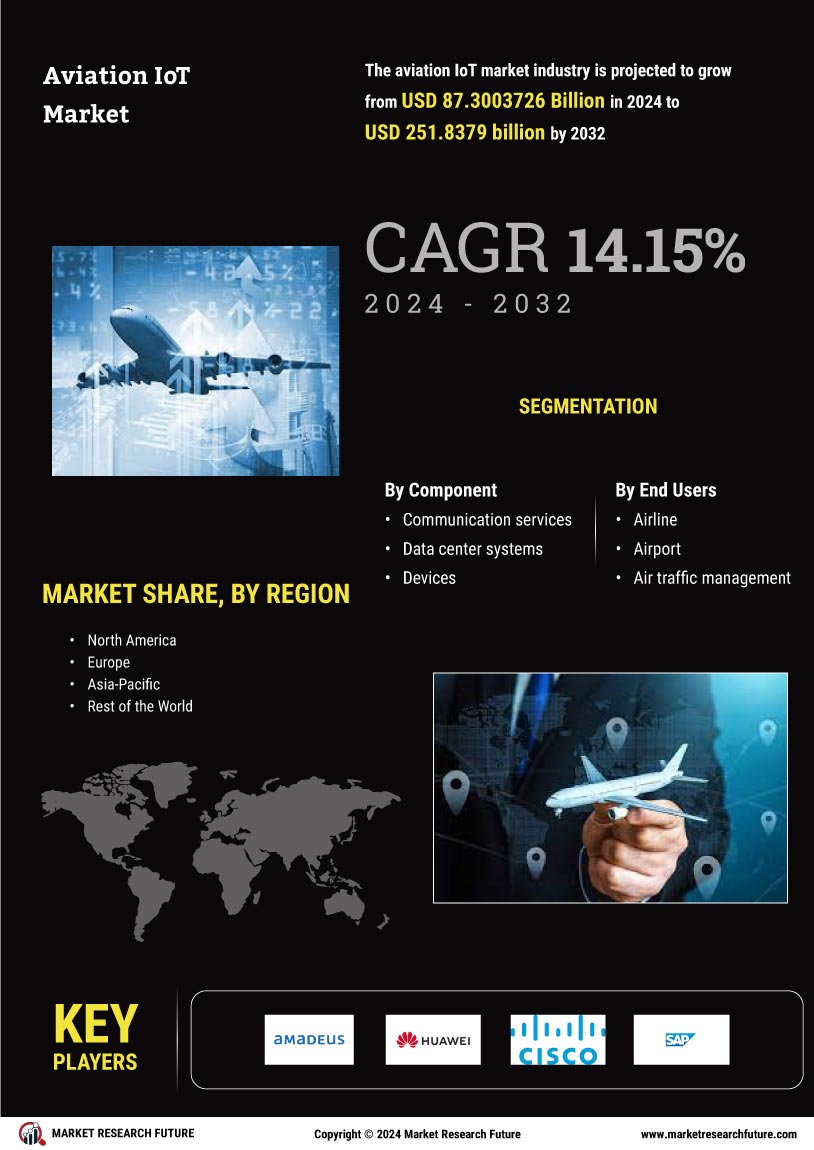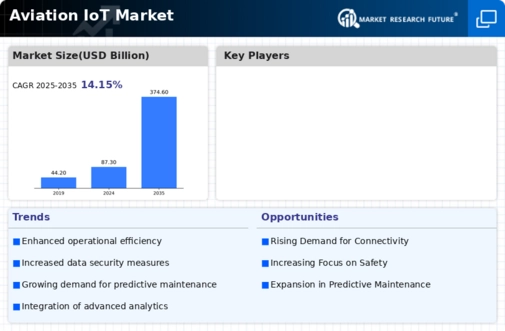Leading market players are investing heavily in research and development in order to expand their product lines, which will help the aviation IoT market, grow even more. Market participants are also undertaking a variety of strategic activities to expand their global footprint, with important market developments including new product launches, contractual agreements, mergers and acquisitions, higher investments, and collaboration with other organizations. To expand and survive in a more competitive and rising market climate, aviation IoT industry must offer cost-effective items.
Manufacturing locally to minimize operational costs is one of the key business tactics used by manufacturers in the global aviation IoT industry to benefit clients and increase the market sector. In recent years, the aviation IoT industry has offered some of the most significant advantages to medicine. Major players in the aviation IoT market are attempting to increase market demand by investing in research and development operations are Amadeus IT Group SA, Huawei Technologies Co. Ltd, Cisco Systems Inc, SAP SESITA and others.
Cisco Systems, Inc., also known simply as Cisco, is a worldwide firm with its main offices in San Jose, California, specializing in digital communications technologies. Cisco develops, produces, and sells networking hardware, software, telecommunications gear, and other high-tech services and goods.[4] With cutting-edge technologies like Webex, OpenDNS, Jabber, Duo Security, and Jasper, Cisco is a leader in specialized tech industries like the Internet of Things (IoT), domain security, videoconferencing, and energy management. The largest technological company in the world is Cisco.
In October 2018, the capital airport of the UAE underwent digital transformation thanks to a partnership between Cisco Systems Inc. and Abu Dhabi Airports Company (ADAC). In this collaboration, Cisco System Inc. used its IoT solutions to help link devices and analyze vital data for providing value to ADA's clients and important partners.
Huawei Technologies Co., Ltd. offers telecommunications and networking products. The business researches and develops servers, storage, security, and other networking solutions in addition to internet access and transmission networks. Business consultancy, network integration, assurance, managed services, learning, international delivery, and other services are also provided by Huawei Technologies. The products, solutions, and services Huawei offers are affordable and secure. We seek to empower individuals, improve home life, and spark innovation in businesses of all sizes through open cooperation with ecosystem partners, which enables us to deliver enduring value to our clients.












Leave a Comment